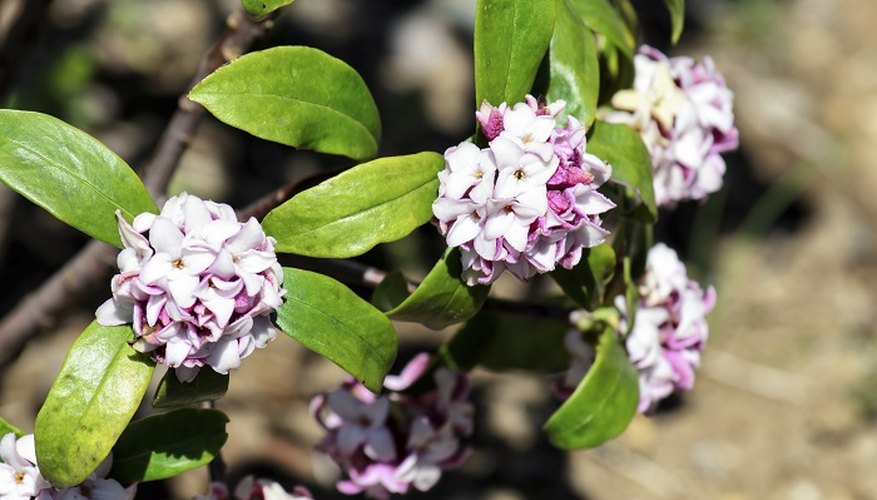Daphne varieties run from deciduous to evergreen, and many offer clusters of intensely fragrant flowers. All daphne shrubs require well-drained soil and regular summer watering. If you admire a friend's daphne, ask for a cutting. Daphne, like many ornamental woody plants, propagates easily from cuttings. You improve the odds of success by taking your stem cutting at the right stage of plant growth, rather than relying on calendar dates.
Take a semi-hardwood cutting from a healthy daphne plant during the period from mid-July to September. Look for reasonably firm wood and full size leaves on the current season's growth, easiest to identify just after a growth spurt. Cut terminal stems -- the tops of the stem -- in segments of 10 to 15 cm (4 to 6 inches) with sharp pruning shears.
- Daphne varieties run from deciduous to evergreen, and many offer clusters of intensely fragrant flowers.
- Look for reasonably firm wood and full size leaves on the current season's growth, easiest to identify just after a growth spurt.
Remove flowers or flower buds from the cuttings to enable to plants to focus energy on rooting. Remove leaves from the lower half of the cuttings. Keep the cuttings moist and cool until planting by wrapping them in wet paper towels and storing in a dark plastic bag.
- Remove flowers or flower buds from the cuttings to enable to plants to focus energy on rooting.
- Remove leaves from the lower half of the cuttings.
Prepare the rooting medium. Use a mixture of half peat and half perlite, or half peat and half sand. Water the medium.
Insert the cuttings, right side up, into the medium. One-third to one-half the length of each cutting should be in the medium. Plant the cuttings sufficiently far apart that all leaves receive sunlight. Water again, then cover with plastic, and place in indirect sunlight. Keep the cuttings moist until roots grow.
Transplant newly rooted cuttings into a flower bed or a pot. Wait until the daphnes grow larger to transplant them into your garden.
TIP
Some gardeners dip cuttings into root-promoting compounds before planting. If you decide to use rooting hormones, tap the cuttings after dipping and before planting to remove all excess powder.
